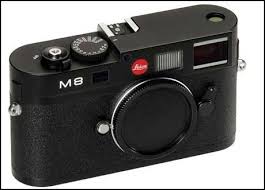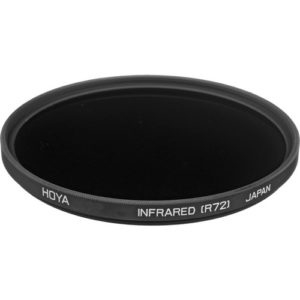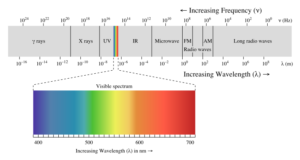Catch a glimpse of an unseen world with infrared photography.
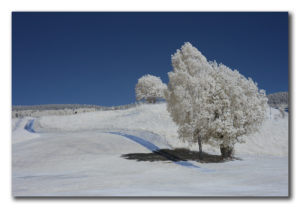
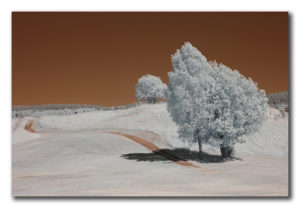
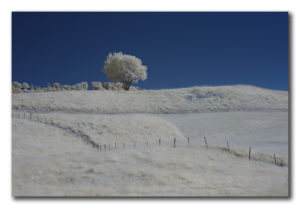
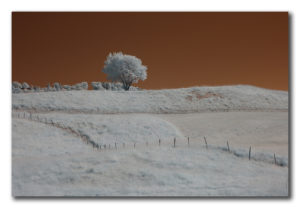
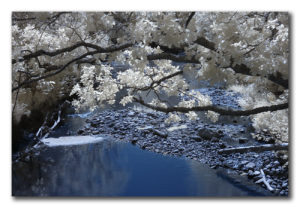



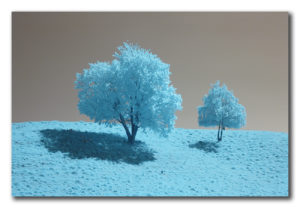
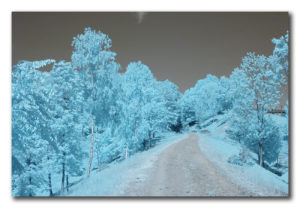
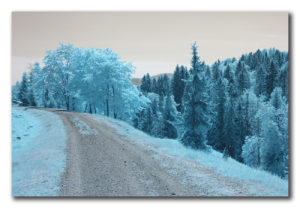

The history of infrared photography.
Robert Wood published the first infrared images in 1910. His photos were shot on experimental film that required very long exposures. For that reason, most of his subjects were landscapes. In World War I, infrared photos proved invaluable. The images could pierce the toxic gas that polluted the air. Troops were better able to determine differences between buildings, vegetation, and water to gather crucial intel.
In the thirties, Kodak and other camera manufacturers commercially released infrared film to the general public. Then, during World War II, the military continued its research into IR photography. It became a vital tool for modern warfare.
Two decades later, recording artists like Jimi Hendrix and the Grateful Dead further popularized the technique. They released album covers with infrared images that were popular due to their multicolored look. Now, the genre no longer requires special film to capture the images. Modern cameras and filters have made digital infrared photography more accessible than ever.
What is IR?
In infrared photography, the image sensor used is sensitive to infrared light. The part of the spectrum used is referred to as near-infrared to distinguish it from far-infrared, which is the domain of thermal imaging. Wavelengths used for photography range from about 700 nm to about 900 nm.
‘Color’ is nothing more than our brain’s way of distinguishing between different wavelengths in the spectrum of visible light. Contrary to popular belief, infrared is very much unlike the color red. The prefix ‘Infra’ means ‘below’ or ‘under’, so the term ‘Infrared’ actually pertains to light with wavelengths smaller than that of the color red. As such, ‘Color’ does not actually exist in infrared; It can only be measured in tones (i.e. monochromatic black & white).
Equipment
I will only talk about digital infrared photography here, not infrared film photography here.
Camera vise, you have two options, either modify a DSLR camera by removing the infrared filter on the sensor, or use a Leica M8/8.2 camera. The former has a big disadvantage, being a DSLR, you’re looking through the lens, and since the IR filter removes all the visible light, you will need to first compose your photo without the filter, then put the filter on and then take the shot. In practice, this means that you need to use a tripod.
However, using a rangefinder camera as Leica M8 is, has a great advantage because you don’t see through the lens, but through the viewfinder, hence you keep the filter on the lens and it is very easy to do handheld photos.
M8: https://www.l-camera-forum.com/leica-wiki.en/index.php/File:M8-top.jpg
M8.2: https://www.l-camera-forum.com/leica-wiki.en/index.php/File:M82-top.jpg
The Hoya R72 Infrared Filter is most probably the most used and best choice for starting out:
https://www.bhphotovideo.com/c/product/116763-REG/Hoya_B46RM72_46mm_RM72_Infrared_Glass.html
Software tips
Tip #1: Swap the red and blue channels with the channel mixer to make your false-color landscapes more psychedelic. Go monochromatic and make that blue sky black or turn bright green foliage snow white. Tone down your white balance to give your subjects an eerie, ghostlike effect.
Many tutorials suggest changing the Channel Mixer settings to the following:
Red Channel: Red=0, Green=0, Blue=100
Blue Channel: Red=100, Green=0, Blue=0
Green Channel: Red=0, Green=100, Blue=0
Tip #2: Set your camera to RAW/DNG + JPEG and choose Monochrome. Then you get a finished developed Black & White IR photo!
